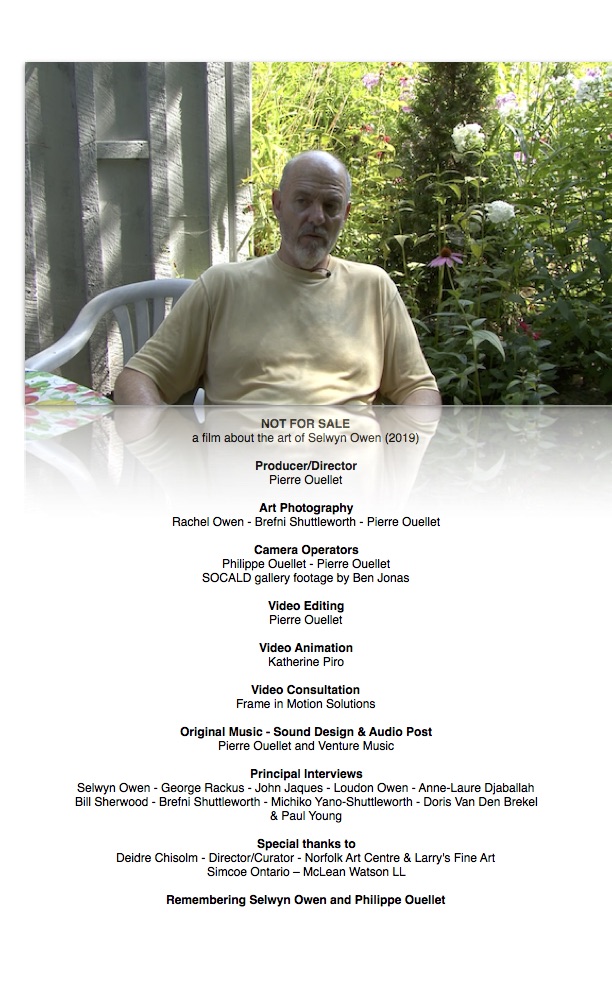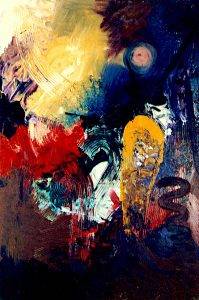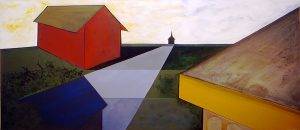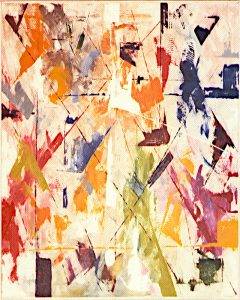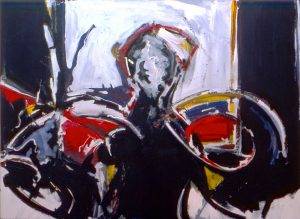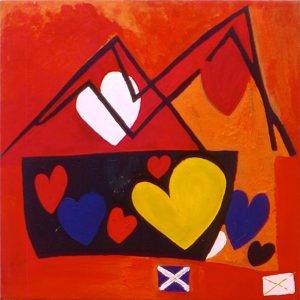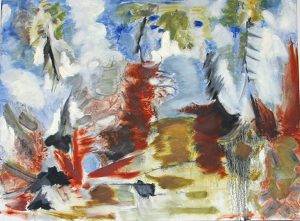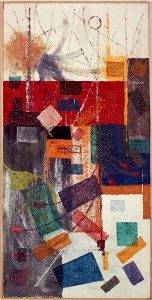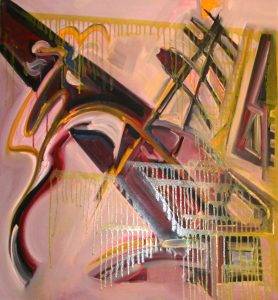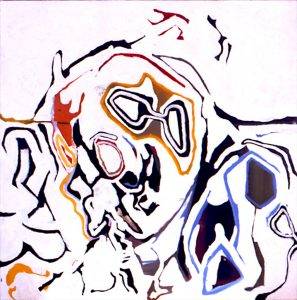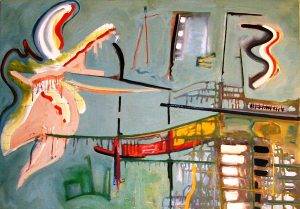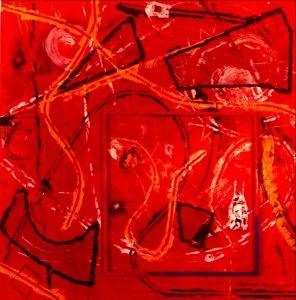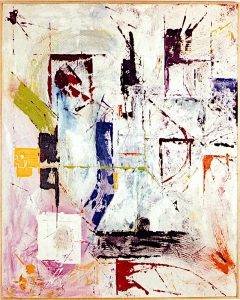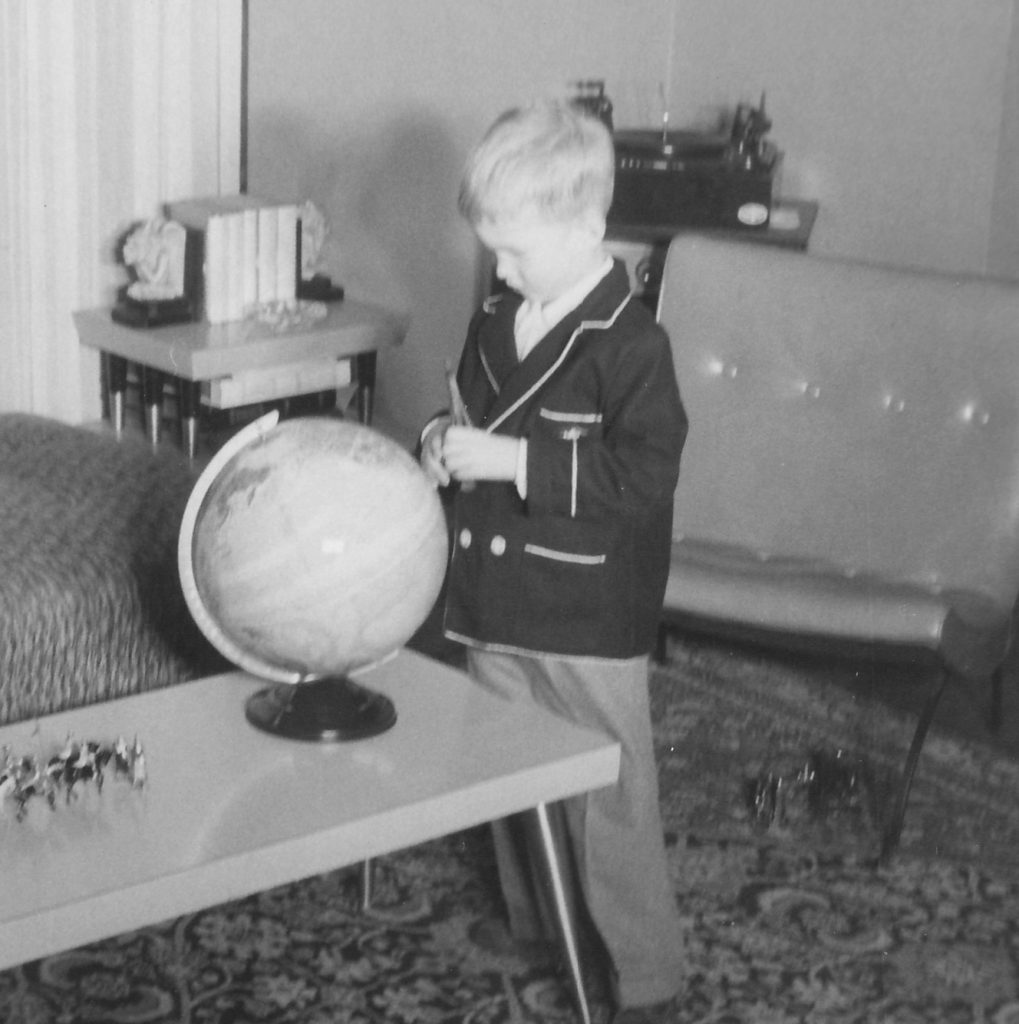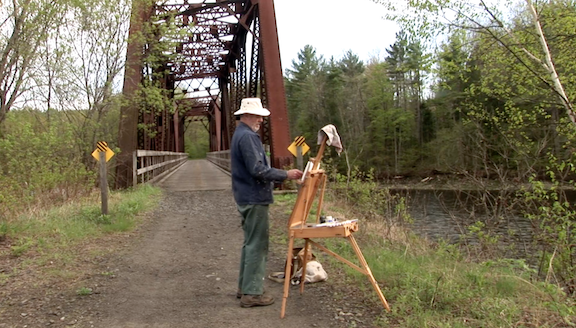
Projectlifeworld presents a refreshingly candid one-hour documentary about the art of British-Canadian artist Selwyn Owen. For over four decades, beginning in the early 1970s, Selwyn Owen has been engaged in a relentless exploration of the possibilities of abstract expressionism, developing over his lifetime both a compelling visual code and a deeply personal calligraphy.
Having turned his back on the art establishment at an early age, acting out his youthful resentment of authority fueled by a deep suspicion regarding the nature of critical acclaim, the artist chose to focus on his work and to follow his intuition as it found expression in his canvases and other artistic projects of his daily life.
Working mainly in groupings or series of paintings which sometimes took years to fully realize their final expressive potential, the artist remained studio-bound in order to dedicate himself to redefining a vision of the world and humanity communicated in terms of the emotional contingencies of encounter and introspection.
The documentary Not for Sale began in 2010 when Selwyn asked me to give my opinion on two manuscripts that he had commissioned about his life and his painting. After consideration, I suggested that these written pieces (available elsewhere on this site) required a discussion about his art itself and a reflection, by the artist, on his practice from early on until present. We then began a series of recorded interviews, mainly around my kitchen table, spread over a period of months, where Sel talked about his work, his life, his family and his dreams. The documentary is a natural extension of this exploration.
The film contains interviews and commentaries by mentors, friends, acolytes and fellow artists whose reflections open up a dialogue with both the artist and his work. But in the end, it is the sheer range, diversity and execution of the paintings themselves which are the focus of the program because and its main character, in the words of the artist himself “it is the work that matters… the title, provenance, signature, all these belong on the back of the canvas…”
